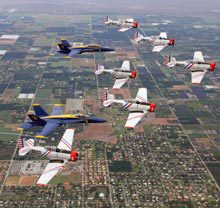That clanging turns out to be coming from a submarine on the bottom of the sea, but there have been no recent sinkings or unusual incidents in the area. When some of the crew suggest that the sub may be haunted, an anxious and confused Chief Bell (played by Kellin) becomes increasingly distressed and faints. He is sent to see the ship’s doctor. The destroyer’s commander, Captain Beecham (played by Oakland), orders the ship’s diver, McClure, to investigate.
Once he learns that the submarine is American, Chief Bell becomes increasingly unstable and starts seeing apparitions of dead sailors who seem to summon him to come to them. Diver McClure later discovers the number of the submarine, “714,” which Beecham is able to identify as belonging to a submarine that was sunk some 20 years earlier during World War II. McClure subsequently produces a dog tag for Beechham that he recovered from the ship. It turns out (cue the spooky music) that the tag once belonged to Chief Bell.
When Bell is shown the tag by his captain, he recalls his experience on the sub and becomes distraught over the role be believes he played in its sinking. He remembers that he had been a signalman. While he attempted to change the infrared filter on a signal light in the dark of night, the filter fell off. Japanese ships then spotted the submarine and sank it. Miraculously, Bell fell off the submarine during the shelling and was later rescued by an American destroyer. He tells Beecham that he believes that the clanging noise is being made by the dead crew underwater. They “know” he is right above them now and are demanding that he join them in death.
Bell now becomes completely overwhelmed by survivor guilt and feels personally responsible for the sub’s demise while winding up as the sole survivor. The captain tries mightily to convince him that he wasn’t the cause of the incident but Bell runs to the deck, screaming that his dead shipmates are “calling muster on me!” He jumps overboard and drowns, his crew unable to save him.
One realization I drew from this powerful show was that this poor man got trapped in a terrible moment. Another was that if you string enough moments together, you get a life. Sort of like if you flip through enough still photos taken in sequence fast enough, you get a movie. But in some ways it’s the moments that count most, the pieces of life you can examine and savor before moving on to the next one. In the case of “The Thirty-Fathom Grave,” Chief Bell ultimately drowns in a horrible moment from his past.
The opposite side of that kind of moment is what psychologist Mihaly Csikszentmihalyi calls “flow experience.” It’s a much nicer moment or series of them, much healthier and invigorating.
Flow experience is an important notion presented by Csikszentmihalyi to describe those moments when you are completely and totally absorbed in an activity. In effect, all else disappears. You have total concentration. Nothing else matters. You are in your own world.
During a flow experience, one’s focus is total. Nothing else matters except the activity you are engrossed in. For minutes or hours on end, there is no past or future, only a present. We all have these moments, for example while reading a great book, working at a favorite hobby, playing sports, or developing a new product. Maybe inventing a new recipe.
Csikszentmihalyi notes that we all have the capability to engage in flow experiences and the more of them the better. We’re happier, more content, more productive. Probably healthier, too, as our skills and interests are maximally engaged.
Which brings me to dogs. Dogs are great at living in the moment. They seem to have flow experiences of a sort all the time. If they’re well cared for and healthy, they live every day precisely in the here and now. No fussing or anguishing about the past, no planning for or worrying about the future. Everything is right here, right now… this game, this hunt, this tummy rub, this treat. They don’t have to learn how to do this. They’re wired for it.
People can do this too. The trick seems to involve “snapping out of it” long enough and often enough to keep your life on track. Go to work. Run some errands, pay the bills, fix a problem around the house. Make sandwiches for the kids. Get a haircut. Take out the trash.
Sometimes it’s a long journey. And sometimes it only takes a moment.









